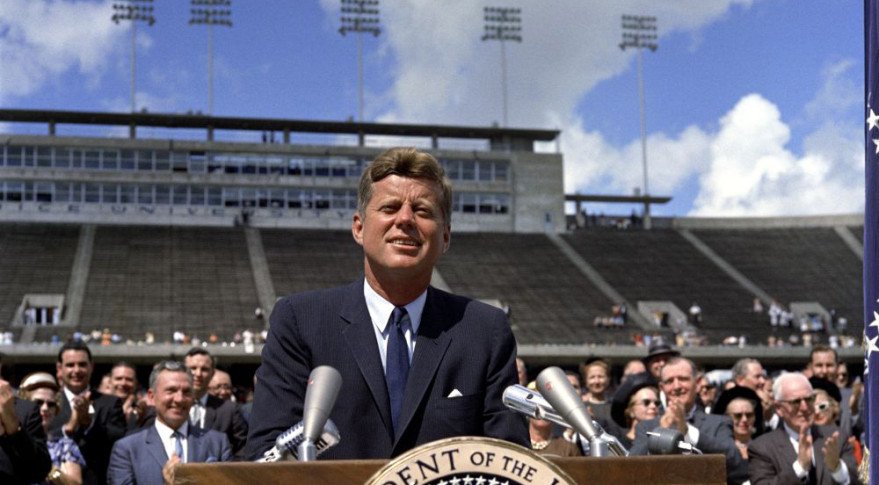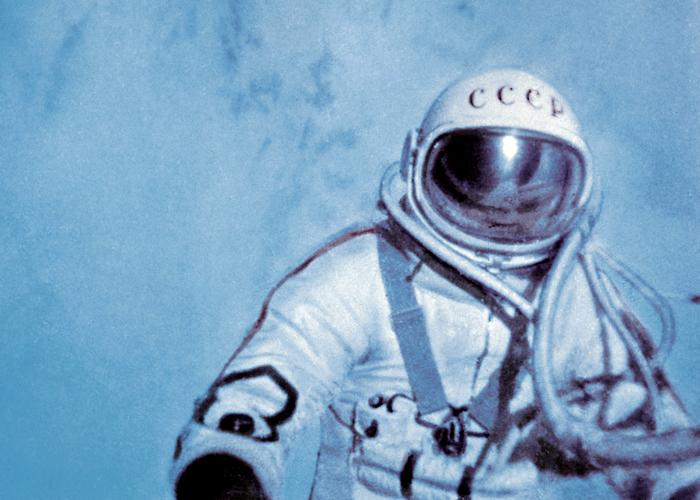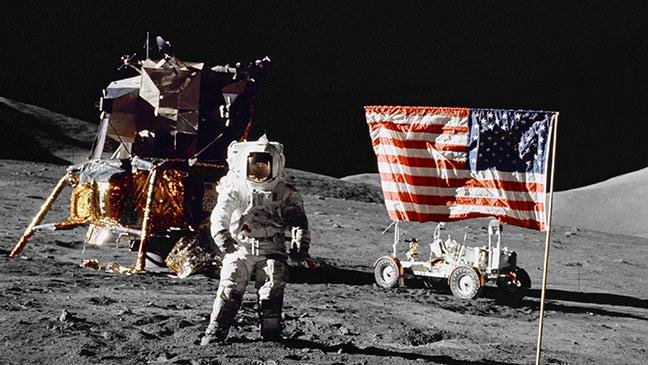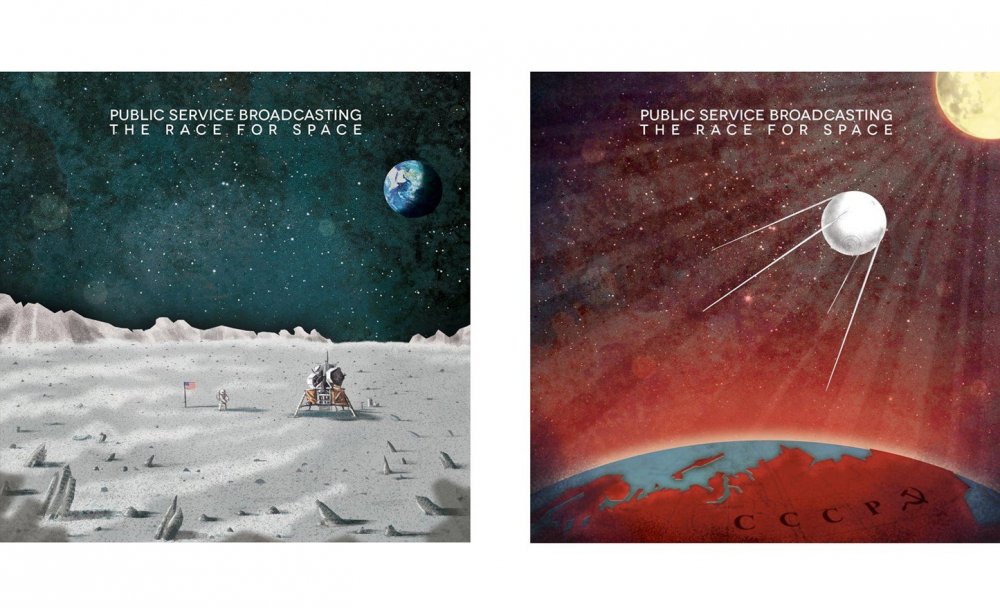Public Service Broadcasting "The Race For Space" Essay
The Space Race between both the USSR and the United States is by far one of my favorite eras of history to study. They say competition is the perfect motivation, and I truly believe, from a technological standpoint, this is era is a prime example of that motto in its purest form. Some of the biggest strides in human history were made in a time where computers were still the size of rooms all due to fear, curiosity, and drive. Public Service Broadcasting’s album, “The Race For Space”, tries to capture all of these emotions, during a handful of critical points, along this journey in order to show how important this period was for Humanity as a whole. (I will cover the tracks in event order not track order)

Track 2: Sputnik
The year is 1957, and, as tensions of the Cold War are ever increasing with no end in sight, humanity has its eyes on the one place neither power has even traveled: space. The Soviets, ever fearful of the United States launching into orbit, rushed through their plans to launch a 3,000 pound satellite equipped with various scientific instruments. They ended up downsizing dramatically to a 184 pound payload with a 58 centimeter diameter without any instruments. On October 4th of that year it was launched on a R-7 rocket with four stages. It nearly suffered a catastrophic launch failure, but the a combination of engine thrust and wing movement saved it last second. Well what did it do? It beeped. And that beep was the beep heard all around the world. Well at least for 22 days… its batteries actually exceeded the expectation of 14 days. For the first time in all of human history something was able to orbit the earth. It wasn’t the first man-made object in space, but it was the first which was in continual free fall around the earth. So, yes, the Soviets to prove themselves put a beeping piece of metal into orbit because that is all they needed to do to stir so much amazement and fear. The device whose name directly translates to “travelling companion”, would be the spark which set the both countries ablaze and straight into the most heated technological race in all of human history.

Track 3: Gagarin
It is now April 12th, 1961. Multiple years have passed since Sputnik, but no shortage of tests and animals had been launched into space, including the famous cosmonaut dog Laika on Sputnik 2. Now it was time to push the barrier forward onto man's reach into space. Enter Yuri Alexeyevich Gagarin. A 27 year old Senior Lieutenant Gagarin was chosen out of over 200 Russian Air Force fighter pilots by peers and project heads due to his exceptionally quick thinking and attention to detail. At 9:07 A.M. Vostok 1 took off carrying Gagarin on board. Due to the feared consequences of free fall, the Russian mission control was totally in control of the craft the entire time. Yuri was the first human ever in space, a true high water mark achieved by humanity. His trip lasted one obit, a total of 108 minutes. While the United States press showed fear of losing the space race, he was seen in many places as a hero for humanity, going on a global world tour to be paraded around countries including England, Canada, and, of course, across the USSR. This stance of him being a pioneer, regardless of national affiliation, is what PBSB was aiming for in their upbeat track. Looking back now it is easy to say he was a true pioneer for all of humanity and his efforts will forever go down in history as that of a hero.

Track 1: “The Race for Space”
The date is now September 12th 1962. President Kennedy is making a speech to 40,000 people in Rice Stadium. At this point, the United States is far behind in the space race launching the first American, John Glenn, nearly a year after Gagarin. Kennedy knew he needed to rouse the American spirit, and, in effect, his speech became a defining speech in American history. A link to the full speech can be found here: https://er.jsc.nasa.gov/seh/ricetalk.html.
Perhaps one of the most ambitious technological proposals made by a president, Kennedy promised that by the end of the decade America would put a man on the moon. Keep in mind no spacewalks had been taken, lunar modules had been made, no docking sequences had even been practiced, and here was the nation’s leader saying we could make it in 8 years or less. The National Defense Education Act had been passed due to Sputnik and had been in effect since October 4th 1957. Now its efforts of acting as a booster for the mathematics and science related fields was beginning to see results. Young engineers and scientists began coming out of Universities in order to rapidly increase the nation’s technological investments to bound ahead. This key moment not only left the nation space crazed, but made getting to space a budgeted objective at the front of the nation's interest. This vow and critical commitment is what would pave the way for the American Space program to come, as now Americans all over had their eyes on the skies.

Track 7: “Valentina”
Fast forward to June 16th, 1963, Vostok 6 is launched. It is the last in the man orbital missions launched by the USSR starting with Gagarin. Well what made this so different? This time the passenger was Valentina Tereshkova. Yes, the first woman in space. Her mission lasted 3 days and she kept two way radio communications with Voltok 5 which was orbiting with her. In this time she made 48 orbits, which was quite a large feat at the time. Her personal background was that of an avid skydiver and textile factory worker making her the first civilian in space as well. The space suit she wore was the MK-2 which was very similar to the MK-1 that Gagarin wore. These suits were only meant to be pressurized in an emergency, such as if the cabin was punctured. It would take a better space suit in order to do an EVA which is the coming up milestone. Up until this point, humans have remained within their pressurized cabin in order to take a safe trip, but now we move onward and upward by finally getting out of the restrictive hull.

Track 5: “E.V.A”
On the 18th of March 1965, the Voskhod 2 mission was launched. Two cosmonauts were abroad: Pavel I. Belyayev and Alexey A. Leonov. Belyayev was the primary pilot while Leonov was the secondary, but he had a far more important mission. He was to perform the first E.V.A trialing the first space suit with a life support system in the backpack. The flight lasted 26 hours and made 16 orbits. During this time the first spacewalk lasted approximately 20 minutes with Leonov claiming the experience gave him a sense of complete euphoria and tension at the same time. The mission, being reported as a major success, acted as a dramatic blow to the United States government. At the same time, many catastrophic failures occurred while in space, but were never reported on the ground. A few moments after Leonov stepped out of the shuttle he realized his suit had inflated to the point he could not get back in. He needed to decompress, and as he let out oxygen he began feeling the initial symptoms of decompression sickness. He began pulling rapidly on the cord thrusting himself in with a moment to spare, but at his current temp he was at risk of heat stroke. His perspiration blocked his view so he had to maneuver around the airlock blind. He eventually did it and made it back in to the safety of the shuttle. This was only the start of the problems though. Due to this maneuver the oxygen content of the shuttle soared, meaning any single spark would have it blow up as quick as a flash. They managed to lower the oxygen concentration back to a safe levels. The ultimate test occured when they had to manually re-enter the atmosphere due to engine problems. They were exposed to high G forces along with high temperatures only to land off course in Siberia. They were eventually recovered and hailed as heroes. This was yet another large step to making it to the moon with the United States still lagging behind. And they were soon to have one of their largest hardships to date.
Track 4: “Fire in the Cockpit”
On the 27th of January 1967, an event which would live in national infamy occurred. The Apollo 1 space crew, comprised of Virgil Grissom, Edward White, and Roger Chaffee, all entered their command module to undergo a simulation for their up and coming launch. The first problem arose when Grissom complained of a “sour smell” in the spacesuit loop, but decided to continue the test. This was followed by high oxygen flows triggering on and off the alarm. This wasn't resolved as the communications were experiencing problems resulting in the line being only between pilot Grissom and mission control. At 6:31, oxygen levels quickly rose as Chaffee casually says he smells fire, but within two seconds, White proclaims, “Fire in the cockpit.” Escape procedure was supposed to take ninety seconds, but ultimately that time frame was too long. In the highly oxygenated environment, the fire spread too quickly, followed by the command module rupturing forcing black smoke across the landing pad. An eventual investigation found that the fire was started by a faulty bundle of wires located behind their heads. It took firemen three minutes to quell the fire and to open the doors, but it was too late all three perished. It was a day of national remembrance and an overall low in the American Space program up until that point. Their sacrifices were distinguished with the highest regard as the nation mourned and tremendous loss.

Track 8: “Go!”
Apollo 11 is by far the most known aspect of the space race. It is the moment where scholars say the United States sealed their place as the winners of the space race. It inspired kids for years to come to become astronauts. The Apollo 11 mission’s ultimate goal was to land the first man on the moon fulfilling Kennedy's earlier promise and legacy. Apollo 11 launched on July 16th, 1969 with astronauts Neil Armstrong, Michael Collins, and Edwin “Buzz” Aldrin. It took 75 hours to reach lunar orbit. This is where the focus of the song is. It includes a systems check as the lander makes it's landing maneuver and lands on the surface. The utter tension at mission control was palpable. This was the most critical part of the mission, and when they landed, from the utter joy heard over the radio, the public knew they had finally done it. Tee descent began at 102:33 with the ultimate touchdown resulting at 102:45. After a period of set up and a postponed rest period, Armstrong made his exit onto the surface at 109:24:19 to utter those famous words. Aldrin soon followed behind with the whole thing being broadcasted to the American Public. This moment, the moment where America gathered around their television screens to watch them be the farthest away from anyone else that any human has ever been, was the height of the space race. They made their return launch starting at 124:22 and plunged back into the Pacific Ocean on July 24th. These pioneers set the standard of human exploration in the space age and acted as role models for new explorers for years to come.

Track 9: “Tomorrow”
The last track of the album is of course the most inspirational. It focuses around Apollo 17, which was the last manned mission to the moon. it was launched on December 7th, 1972 with crew members Eugene Cernan, Ronald Evans, and Harrison Schmitt. It's main objectives were to put a Rover on the moon, conduct testing, and take samples such as moon rocks and photographs. In total over 16 hours of EVA were conducted, 30.5 kilometers we're traversed by the rover, and 243 pounds of samples were collected. The mission was a success but extremely bitter sweet being the last mission in the Apollo chapter. It ultimately completed the era of the Space Race. It has much more sentimental value in this aspect, as the track takes the time to reflect on the previous decade and a half of progress and how far the human race has come.
Ultimately the space race was a period of history where nations gathered behind the scientific progress they conducted. Yes, there was always the fear of mutual destruction, but the sense of shared awe at what humanity achieved far overshadows that factor when looking back at history. There are not many periods of history where technology progressed at such breakneck speeds, and may not be for a long time. There is plenty more to read about the period, and I encourage you to do so if this interested you at all.
As always it had been a pleasure! This is ThePeculiarParticle, signing out.
Informal Bibliography
Esa. “The Flight of Vostok 1.” European Space Agency, European Space Agency, www.esa.int/About_Us/Welcome_to_ESA/ESA_history/50_years_of_humans_in_space/The_flight_of_Vostok_1.
“The First Spacewalk.” BBC, BBC, 2014, www.bbc.co.uk/news/special/2014/newsspec_9035/index.html.
Larimer, Sarah. “'We Have a Fire in the Cockpit!' The Apollo 1 Disaster 50 Years Later.” The Washington Post, WP Company, 26 Jan. 2017, www.washingtonpost.com/news/speaking-of-science/wp/2017/01/26/50-years-ago-three-astronauts-died-in-the-apollo-1-fire/?noredirect=on&utm_term=.7d4feb08cec3.
“NASA.” NASA, NASA, www.nasa.gov/.
“National Air and Space Museum.” The Wright Brothers | The Wright Company, airandspace.si.edu/.
RFE/RL. “Kennedy's Famous 'Moon' Speech Still Stirs.” RadioFreeEurope/RadioLiberty, RadioFreeEurope/RadioLiberty, 13 Sept. 2012, www.rferl.org/a/kennedy-moon-speech-rice-university-50th-anniversary/24706222.html.
“Space.com.” Space.com, Space.com, www.space.com/.
“Sputnik Spurs Passage of the National Defense Education Act.” U.S. Senate: Select Committee on Presidential Campaign Activities, 9 Mar. 2018, www.senate.gov/artandhistory/history/minute/Sputnik_Spurs_Passage_of_National_Defense_Education_Act.htm.
(Disclaimer the websites were used many times for different articles)
-
 2
2





2 Comments
Recommended Comments